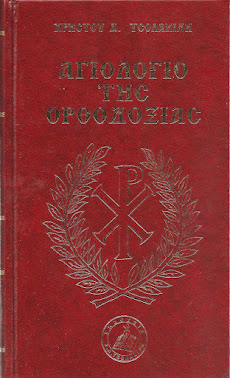Suuri siunaus koko Suomen kirkolle ja kaikille jotka p. Johanneksen muistoa kunnioittavat.
Holy Martyr and Confessor John of Ilomantsi (1884-1918)
Johannes Karhapää was born to a farmer’s family in Sonkajanranta village, Ilomantsi, North Karelia. He was a member of the local youth section of the Brotherhood of Saints Sergius and Herman adopting a deep Eastern Orthodox faith in his early childhood. In 1906, Karhapää requested by then-archbishop of Vyborg and all Finland Sergius (Stragorodsky) to open a religious school in his home village, as the Evangelical Lutheran Church of Finland had launched a campaign for Lutherizing the traditionally Orthodox Karelia. The 1908 the completed school was built by Karhapää and the Karelian Brotherhood, an organization established in Olonets to oppose the Lutherization. Karhapää now started working as a domestic missionary across Karelia with the monks of Valaam Monastery.
Since 1914, he was a traveling religion teacher in Kuopio Province. Karhapää was also active in the completion of the Church of Anna the Prophetess, inaugurated in Tuupovaara in 1915. The church was built by the Karelian Brotherhood and financed by a wealthy Saint Petersburg businessman. Due to his activities, the Finnish nationalists accused Karhapää for supporting the Russification of Finland and promoting the the ″Russian faith″ (Finnish:″Ryssän usko″, the word ryssä is a racist slur for Russian), calling him a collaborator of the Russian secret police Okhrana. The nationalist press accused Karhapää of ″anti-Finnish″ politics. He was called the ″dark force of North Karelia″, as the nationalists claimed the Karelians were not aware of their true religion and ethnicity. Instead of defending himself against the accusations, Karhapää focused on his religious work. According to the Church historian Kauko Pirinen, Karhapää’s work was only influenced by his deep faith but not any kind of politics. After the 1917 Russian Revolution, the Karelian Brotherhood owned schools and churches were closed, and the harassment on Karhapää became even more intense. The Finnish right-wing nationalists called him a Bolshevik, although he had supported the Tsarist regime. Karhapää was finally expelled of his teacher’s vacancy just before Finland gained its independence in December 1917. As the Finnish Civil War broke out in January 1918, Karhapää was soon called to join the White Army, but was arrested at the conscription meeting, and transferred to Joensuu where he was placed in a prison camp set up for the Reds. After a while, Karhapää was executed by a firing squad and buried in a mass grave. The exact date of Karhapää’s death is not known. According to his wife, Karhapää was executed in 8 March, but the War Victims of Finland 1914–1922 database says he was shot in 7 March. Karhapää’s body was finally handed over to his wife in December 1918, and buried in Ilomantsi, where a large crowd of local Orthodox and Lutherans attended the funeral. Karhapää’s gravestone was stolen twice and thrown in the nearby lake until it was cast in concrete.










Δεν υπάρχουν σχόλια:
Δημοσίευση σχολίου